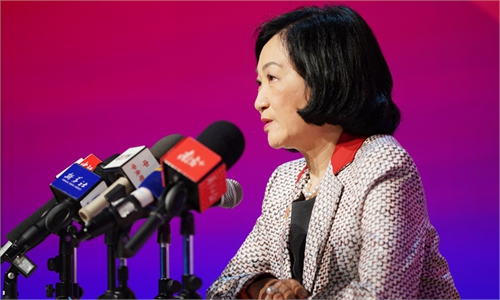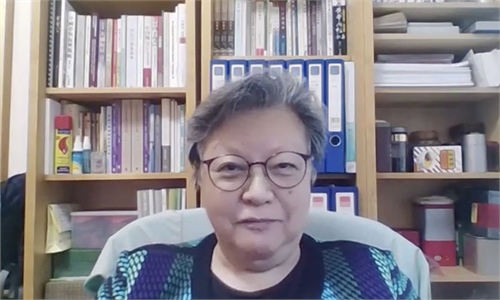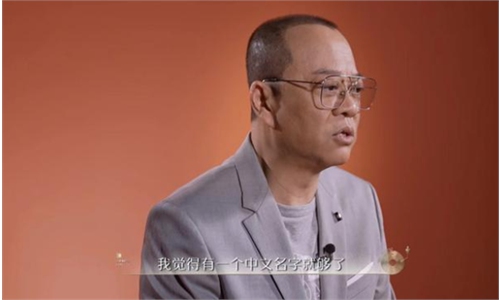ARTS / MUSIC
From colonized port to cultural hub, closer HK-mainland exchanges help fuse Hong Kong into Chinese culture
Closer HK-mainland exchanges help fuse Hong Kong into Chinese culture
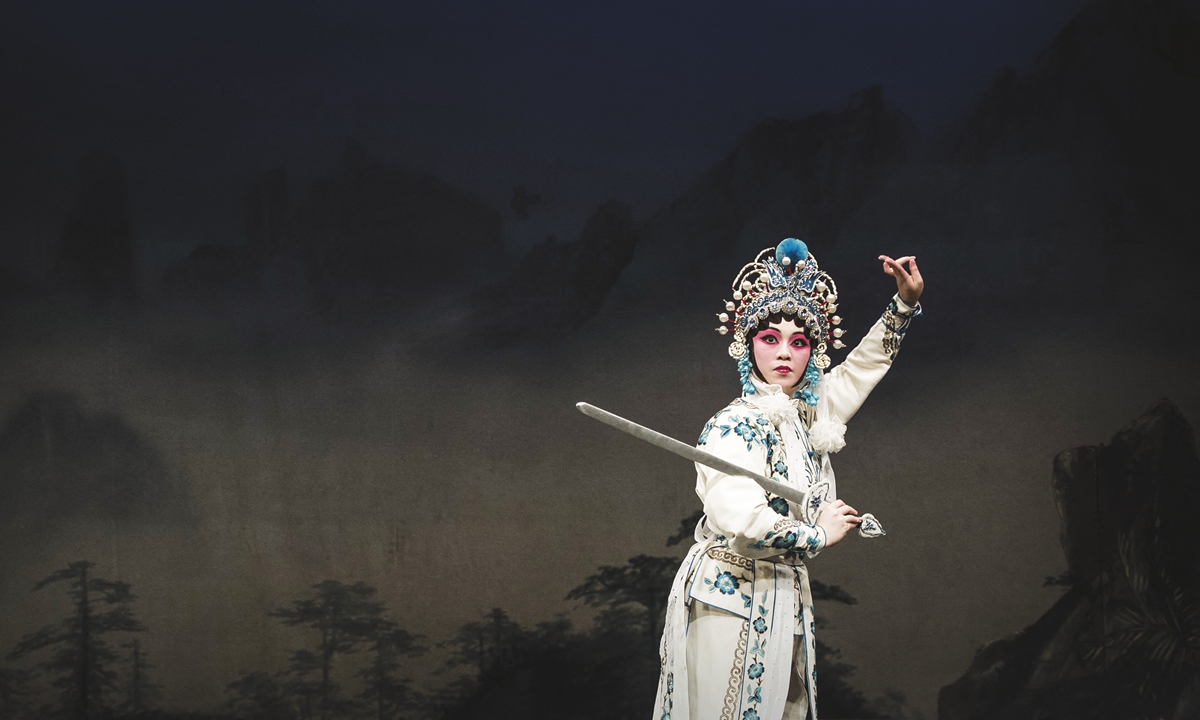
A performer poses during a Cantonese Opera Photo: AFP
Editors' Note:
Hong Kong cinemas, especially kung fu movies, Cantopop classic songs, Cantonese opera being the background music to many locals' childhood. Many can even name more when talking about the diversified culture in Hong Kong, a pearl shining on the connection and exchanges between the Chinese mainland and the rest of the world. Founded with Lingnan's Cantonese culture, an important part of China's unity but culturally diverse, the culture of Hong Kong became heavily influenced by the West during the days of the British colonial rule, transforming it with traditional Chinese roots and forming a fusion of East and West. Due to the economic advantages that Hong Kong had over the Chinese mainland in the 1980s and 1990s, mainland people had still followed the lifestyles and trends brought together by pop stars like Leslie Cheung, Anita Mui and Alan Tam, as well as TV and movie stars like Jackie Chan and Chow Yun-fat.
After Hong Kong returned to the motherland in 1997, such cultural influences changed from one way into two ways. People from both the Chinese mainland and Hong Kong, born in the 1990s and the 2000s, feel such changes and fusion from increasing traditional Chinese events to mainstream blockbusters like those by Hong Kong director Hark Tsui's The Taking of Tiger Mountain and Dante Lam's Operation Red Sea.
Chinese President Xi Jinping said on June 29, 2017 when visiting Hong Kong that he hoped the HKSAR can carry forward its traditional culture, play its role as a platform facilitating Chinese and Western cultural exchanges, and promote cultural exchanges and cooperation with the mainland.
All is becoming a reality, with mutual cultural exchanges between Hong Kong and mainland and with Hong Kong a new window for the rest of the world to experience China's rich culture as a whole at the time to mark the 25th anniversary of its return to the motherland.
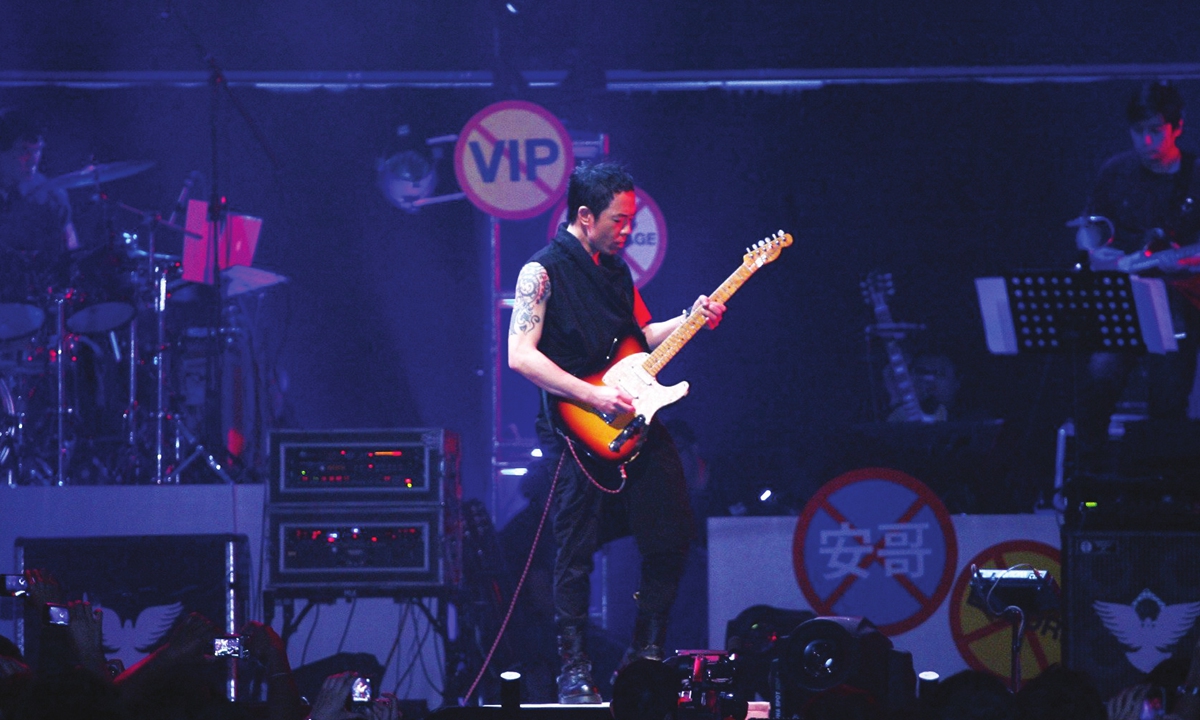
Hong Kong musixian Paul Wong Koon-chung Photo: IC
A cassette of rock band Beyond's Earth
It came again! Fourty-some Guo Kaizhi doesn't remember how many times yet that his wife complained to him that he needs to clean his vast collection of cassettes featuring albums of various Hong Kong and Taiwan rock bands and singers. Among them is the 1990 Putonghua album The Earth from then Hong Kong rising rock band Beyond which Guo cherished the most. Even 30 years later, Guo still remembered the first time when he, 10-something at that time, heard the Cantonese song The Earth, walking past a local music and video shop in Luoyang, a city in Central China's Henan Province.
"It was a summer afternoon, very hot, but the music broadcast from the store is so loud. And even with no knowledge of Cantonese, I still felt the pulse and power of rhythm and something breeze blowing over your mind," he recalled.
From then on, owning such an album became a dream for the then young high school student. He tried many ways to save money until he decided to skip breakfast and had enough money for it.
Each time in the following years, when he countered difficulties in life and in his studies, he always turned to Beyond's music like Glorious Years and Boundless Oceans, Vast Skies. "They always enlighten me and help me regain the courage with positive power," Guo noted.
Until July 1, 1997, the day when Hong Kong returned to the motherland, he had suddenly understood the deep meaning in the song The Earth when watching the handover ceremony broadcast live on TV.
"The strong feeling, love and pride for our motherland are just as the inspiration the song writer had at the beginning. Inspired by the reunion of his father and uncle since being separated due to the civil war period, Gene Lau, the song writer, expressed love and nostalgia for the motherland through the song," Guo recalled. Seeing China's national flag flying high in the venue hosting the handover ceremony, he was moved to tears.
A recent music show Infinity and Beyond that invited a number of heavyweights of Hong Kong Cantopop scenes, being aired at Mongo TV, has recaptured the attention from audiences in both the mainland and Hong Kong. People surprisingly discovered that these Cantonese songs are still full of charms even after so many years, and with the country's ongoing Great Bay Area strategy in place, Cantonese music is finding more fan bases with nutrition from China's rich cultural heritage.
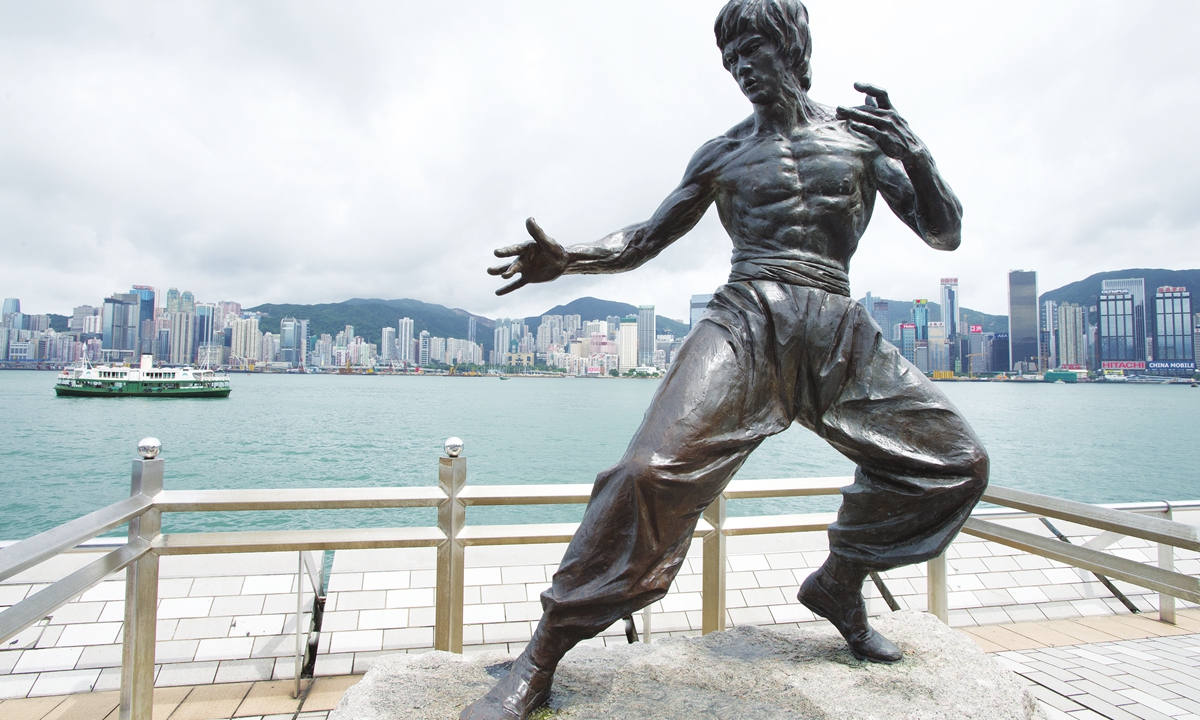
A statue of martial artist Bruce Lee on Avenue of Stars in Hong Kong Photo: VCG
A DVD collection of Hong Kong wuxia film
No one could say no to a Hong Kong action or wuxia film with the dazzling fighting scenes and how these kung fu masters helped the poor and the weak and guard justice and against foreign invasions.
"My first Hong Kong wuxia film is The Swordsman in 1990 when I was an elementary school student. When its theme song Chong Hoi Yat Sing Siu (lit: A Sound of Laughter in the Vast Sea) rang out, I can feel my blood burning," Shi Wenxue, a Beijing-based film critic, shared his experience of Hong Kong movies with the Global Times.
As one of the greatest Hong Kong cultural symbols, Hong Kong movies, especially the wuxia genre concerning the adventures of martial artists in ancient China, have accompanied Shi in different stages of his life. He can speak on the names of Hong Kong movies and directors with great familiarity and for years he kept a series of collections of Hong Kong wuxia films.
With deep roots in Chinese cultures like Chinese opera, storytelling and aesthetic traditions, Hong Kong filmmakers combined elements from Hollywood with new techniques, which created a golden age of Hong Kong action cinema from the 1970s to the 1990s.
Shi said that he can clearly remember the acrobatic fighting scenes played by Jet Li or Zhao Wenzhuo in the film series about Chinese martial artist master Wong Fei-hung. The splendid fighting actions are one of the main reasons making the then ten-year boy fall in love with such films.
The other one is the movies' cultural roots and spiritual core, which are Chinese traditional virtues and moral characters including guarding justice and standing with the motherland all the time.
These spirits conveyed by wuxia movies keep influencing Shi and he brings the spiritual core in the creation of his own movies."When I produced a movie about motorcycle races, I realized that the competitive spirit and friendship among teammates in the new movie are actually inspired by those classic Hong Kong wuxia movies."
Shi's story is not alone among Chinese film industry insiders.
Luo Luo, also Beijing-based movie critic, is another loyal follower of Hong Kong films. Since she watched Once Upon a Time in China directed by Tsui Hark at the age of five, she fell in love with films, and Farewell to My Concubine made the 15-year-old Luo decide to choose the movie as her life career.
Shi and Luo both confirmed that Hong Kong filmmakers have been gradually melting in the mainland's movie creation environment and have used their experience to produce high-quality works.
The shining parts in classic Hong Kong films can have a positive influence in producing other genres, including commercial narration and more advanced special effects technology. Hong Kong's special territorial charm can enrich the contents of movies, especially for realistic-theme works, experts believed.
More and more Hong Kong filmmakers have discovered their places in the whole country's film industry after the 1997 handover. With their storytelling skills and rich filming experiences, they have completed a number of high-quality mainstream movies like The Battle at Changjin Lake, the country's box-office champion with the record-breaking income of nearly 5.7 billion yuan. The film tells the story of how the Chinese People's Volunteers (CPV) soldiers held their ground amid freezing cold and the enemy's more advanced weapons during the War to Resist US Aggression and Aid Korea (1950-53).
A new Xiqu center in Hong Kong
Hong Kong Cantonese opera singer and actor Law Kar-ying is super busy, rehearsing for an upcoming Cantonese opera show to mark the 25th anniversary at the Xiqu Centre, West Kowloon Cultural District, one of the city's largest cultural programs.
When looking back the past 25 years, the veteran actor said in an interview with Xinhua News Agency on June 17 that "something belonging to us is back," as Cantonese opera is staged almost every day in the theaters across the city.
The older generation in Hong Kong has a very deep affection for Lingnan culture, a regional Chinese culture popular in two provinces of Guangdong and Guangxi, especially the traditional Cantonese Opera, and almost everyone can hum a few words, recalled he.
Guangzhou-based Cantonese Opera performer Ou Kaiming told the Global Times that although the Cantonese Opera in Guangdong Province, Hong Kong and Macao have different characteristics, they share the same roots where the performers from both sides have been tight with each other for more than two decades. Ou was a winner of China's highest theatrical award ̶ Plum Performance Award.
Cantonese Opera was listed as one of China's first national intangible cultural heritages in 2006 through the joint efforts led by Guangdong, Hong Kong and Macao. In 2009, it was officially listed as an intangible cultural heritage by UNESCO.
Performer Ouyang Zuxian based in Foshan, Guangdong, recalled the proudest moment of his 40-year-career which came back to 1997 when he performed with Hong Kong's famed actress Wang Ming-chun.
Ouyang said that including himself, the Foshan crew delivered two performances for a local audience that left him stunned and feeling touched when a 1,000 strong crowd broke into rapturous applause.
Su Debin, a performer based in Shenzhen, Guangdong told the Global Times that some fans would often travel from Hong Kong and Macao to Shenzhen to meeting up with local fans in the city. Including Su, they often gather together at spots such as the Shenzhen Luohu Railway Station.
Before the COVID-19 epidemic, he often traveled 20 to 30 times every year to Hong Kong to share with them the Cantonese opera culture, noted Ou.
"The culture bonds us together, especially when Cantonese opera fans from Hong Kong and Chinese mainland cities meet overseas. The Cantonese opera is a remedy of nostalgia shared by us all," he recalled.
During his 2017 visit in Hong Kong, Chinese President Xi Jinping also watched some highlights of Cantonese operas performed by children. He said that traditional cultural forms including Cantonese Opera had new development opportunities after Hong Kong's return to the motherland. He encouraged performers in Hong Kong and the mainland to carry out more exchanges and learn from each other.
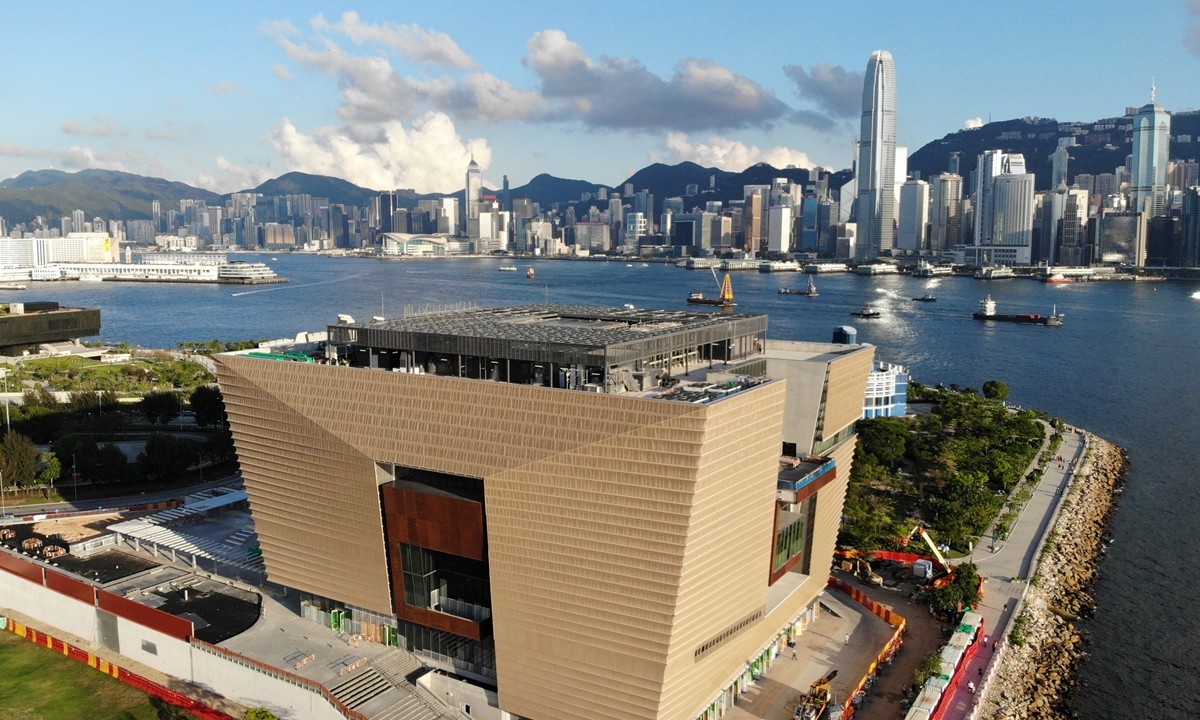
Ding Ware porcelain relic Pillow in the Shape of a Recumbent Child The Hong Kong Palace Museum Inset: Louis Ng, curator of the Hong Kong Palace Museum Photos: IC
A Palace Museum in Hong Kong
With one day left counting down to the public opening day, Louis Ng, curator of the Hong Kong Palace Museum, is even busier than usual making final preparations.
He has worked on cultural protection for over 30 years and had a dream to help more Hong Kong people learn about the over 5,000 years of Chinese culture and numerous national treasures. Now his dream will come true as the new Hong Kong Palace Museum is set to open to the public on July 2 with the first exhibition featuring 914 art works and cultural relics.
Among them, 166 are first-class cultural relics recognized as national treasures. This is the largest loan of artifacts by the Palace Museum in Beijing to another institution since its establishment in 1925.
After 1997, Hong Kong's young people have had more chances to get in touch with Chinese traditional culture personally with increasing exhibitions featuring China's cultural relics and treasures including the discoveries of the Sanxingdui Ruins in 2007.
Chinese cultural elements like hanfu, ancient books and qipao have gained popularity among young people in Hong Kong through close exchanges and ties with the mainland.
Candy Tsang and Beivm Lai, who were born after 1990, have owned several sets of different Han-style traditional clothing, or hanfu. The dresses the two pick to wear are selected in accordance with the event and occasion.
Tsang wears qipao when attending an ode to the motherland activity by writing and reciting ancient poetry and taking family photos with relatives, and wears colorful ruqun, another type of Chinese traditional garment, to attend a party for fans of hanfu.
Explaining why she has been obsessed with the traditional clothing, Tsang told the Global Times that she can feel the long-standing and profound Chinese culture in these beautiful dresses.
Jacky Ko Chung Kit loves to visit different exhibitions containing cultural relics from museums across the mainland. Once he even joined in a group to visit the Palace Museum in Beijing to see for himself treasures from China's ancient civilization.
"The cultural relics make me more interested in learning more about past Chinese history and culture and seeking our Chinese roots," Ko said.
When he stands in front of the exhibits, with history of thousands of years before his eyes, Ko has stronger feelings that he is a Chinese than at any other time.


